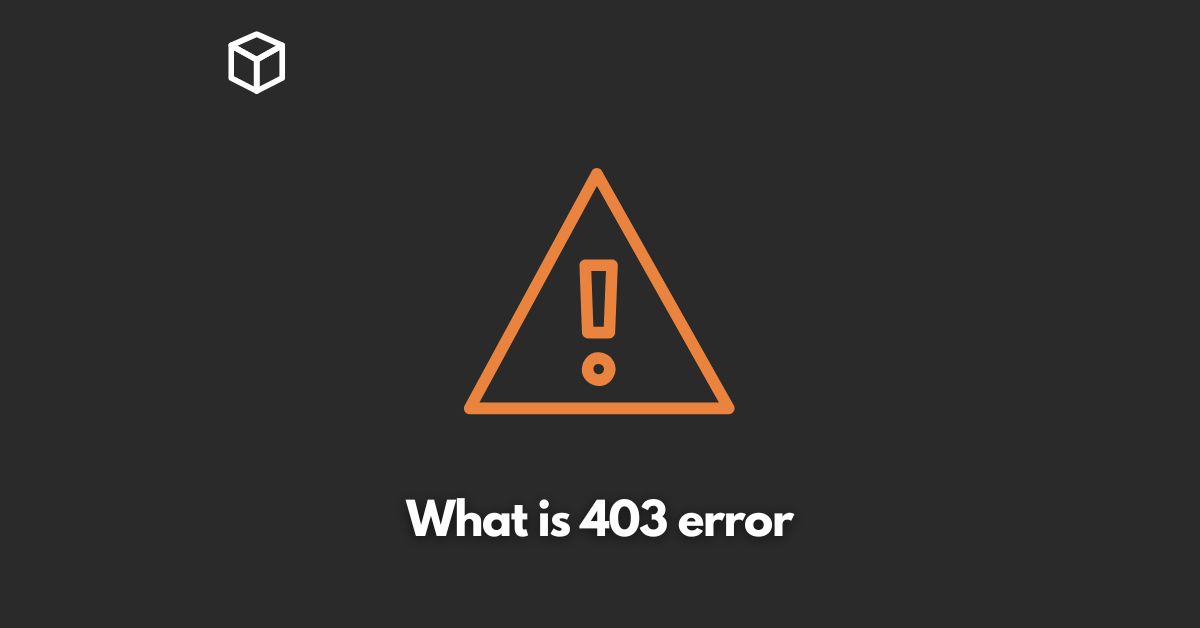403 Error is one of the most frustrating HTTP status codes that a user can encounter while browsing the web.
This error message indicates that the client, either the user or their browser, is not authorized to access the requested resource.
This can happen for a number of reasons, such as the user not having the proper credentials to access the resource, or the server blocking access to the resource due to a security measure.
Causes of 403 Errors
There are several potential causes of 403 Errors, and it’s important to understand them so that you can troubleshoot and fix the issue.
Some of the most common causes include:
- Lack of proper credentials: If a user is trying to access a resource that requires a login, such as a protected area of a website, and they do not have the correct login information, they will receive a 403 Error.
- Security measures on the server blocking access: Some websites have security measures in place to block certain types of traffic or users, such as a firewall or a security plugin. This can cause a 403 Error if the user’s IP address or browser is flagged as suspicious.
- File permissions on the server not allowing access: If the server’s file permissions are not set up correctly, it can prevent certain users or browsers from accessing certain resources. This can also cause a 403 Error.
- IP address being blocked by a firewall: Some firewalls are configured to block certain IP addresses, and this can also cause a 403 Error if the user’s IP address is on the blocked list.
How to Troubleshoot 403 Errors
If you encounter a 403 Error, there are a few steps you can take to troubleshoot the issue and try to fix it.
These include:
- Check the URL for typos or errors: Sometimes, a 403 Error can be caused by a simple typo in the URL. Double-check the URL to make sure it’s correct and try accessing the resource again.
- Verify that the user has the correct login information: If the resource requires a login, make sure that the user has the correct login information and that they are entering it correctly.
- Check server logs for more information on the error: The server logs can provide more information on the cause of the 403 Error, such as the specific user or IP address that is being blocked.
- Contact the website administrator for assistance: If you are still unable to resolve the issue, you can contact the website administrator for assistance. They will be able to provide more information on the cause of the 403 Error and help you fix it.
How to Prevent 403 Errors
To prevent 403 Errors, it’s important to ensure that proper security measures are in place on the server, and that file permissions are set up correctly.
Some of the steps you can take to prevent 403 Errors include:
- Ensure that proper security measures are in place on the server: This can include a firewall, security plugin, or other security measures to block suspicious traffic or users.
- Regularly check and update file permissions on the server: File permissions can change over time, and it’s important to regularly check and update them to ensure that users and browsers have the correct access to resources.
- Use a firewall to block unwanted IP addresses: A firewall can be configured to block certain IP addresses, which can help prevent 403 Errors caused by suspicious traffic.
- Regularly update login information for users: Regularly updating login information can help prevent unauthorized access and prevent 403 Errors.
Conclusion
403 Errors can be frustrating for users and website administrators alike, but understanding the causes and how to troubleshoot and prevent them can make it easier to resolve the issue.
The exact cause and solution of 403 Errors can vary based on the specific scenario and the hosting platform, technology or framework.
It’s always better to check the specific documentation or error logs for the solution, however, by following the troubleshooting and prevention steps outlined in this article, you can help minimize the likelihood of encountering a 403 Error and ensure that your website is secure and accessible to your users.
Further, it’s important to have a clear understanding of the access control of your website, and the resources that are protected and restricted.
This includes understanding the user roles, permissions, and the authentication method.
Therefore, it’s essential to have a robust access control system and regularly review and update it.
In summary, 403 Errors are a common problem that can occur due to a variety of reasons, such as lack of proper credentials, security measures blocking access, incorrect file permissions, and IP address being blocked by a firewall.




